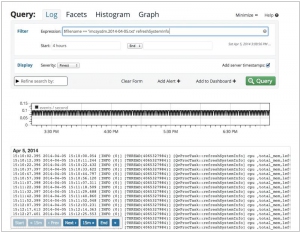Scalyr vs Splunk
November 12, 2023 | Author: Michael Stromann
55
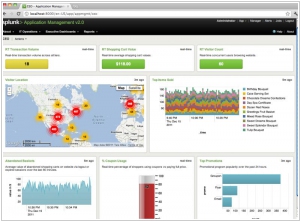
We make machine data accessible, usable and valuable to everyone—no matter where it comes from. You see servers and devices, apps and logs, traffic and clouds. We see data—everywhere. Splunk offers the leading platform for Operational Intelligence. It enables the curious to look closely at what others ignore—machine data—and find what others never see: insights that can help make your company more productive, profitable, competitive and secure.
Scalyr and Splunk are both powerful log management and analytics platforms, but they differ in various aspects. Splunk is a well-established industry leader known for its extensive range of features, scalability, and enterprise-grade capabilities. It offers a robust log ingestion and indexing system, advanced search functionality, data visualization, and machine learning capabilities. Splunk is suitable for large organizations with complex log management needs.
On the other hand, Scalyr is a modern and streamlined log management solution focused on simplicity and speed. It offers real-time log ingestion and search capabilities, making it ideal for organizations that require fast and efficient log analysis. Scalyr is known for its high-performance search queries, log aggregation, and intuitive user interface. It is often favored by smaller to mid-sized companies or development teams seeking a cost-effective solution that is quick to set up and easy to use.
See also: Top 10 IT Monitoring software
On the other hand, Scalyr is a modern and streamlined log management solution focused on simplicity and speed. It offers real-time log ingestion and search capabilities, making it ideal for organizations that require fast and efficient log analysis. Scalyr is known for its high-performance search queries, log aggregation, and intuitive user interface. It is often favored by smaller to mid-sized companies or development teams seeking a cost-effective solution that is quick to set up and easy to use.
See also: Top 10 IT Monitoring software
Scalyr vs Splunk in our news:
2023. Cisco to acquire IT Monitoring giant Splunk for $28B
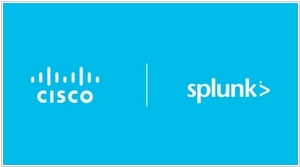
Cisco has announced that it is acquiring Splunk for $28 billion. This acquisition is strategically aligned with Cisco's security-focused business, as it gains access to Splunk's observability platform. This addition will enable Cisco to enhance its ability to assist customers in comprehending security threats while also providing valuable capabilities for analyzing extensive log data to address various challenges such as understanding system failures and troubleshooting a wide range of issues across enterprise systems. It's important to note that both company boards have already given their approval for the acquisition. However, it must undergo regulatory approval, which is not guaranteed due to the heightened scrutiny that such deals are encountering worldwide.
2020. Splunk acquires network observability service Flowmill
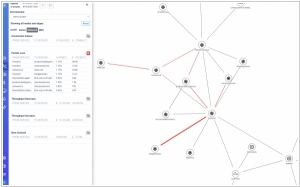
Data platform Splunk continues its acquisition streak as it expands its newly launched observability platform. Following the recent acquisitions of Plumbr and Rigor, the company has now announced the acquisition of Flowmill, a network observability startup based in Palo Alto. Flowmill specializes in helping users identify real-time network performance issues within their cloud infrastructure and offers traffic measurement by service to enable cost control. Similar to other players in this field, Flowmill leverages eBPF, a Linux kernel feature that allows the execution of sandboxed code without the need for kernel modification or loading kernel modules. This capability makes it particularly well-suited for application monitoring.
2020. Splunk acquires Plumbr and Rigor to build out its observability platform
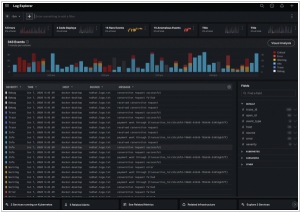
Data platform Splunk has recently made two acquisitions, namely Plumbr and Rigor, in order to enhance its newly launched Observability Suite. Plumbr specializes in application performance monitoring, while Rigor focuses on digital experience monitoring. Through synthetic monitoring and optimization tools, Rigor assists businesses in optimizing their end-user experiences. These acquisitions serve as valuable additions to the technology and expertise gained by Splunk through its acquisition of SignalFx for over $1 billion last year.
2017. Splunk expands machine learning capabilities across platform
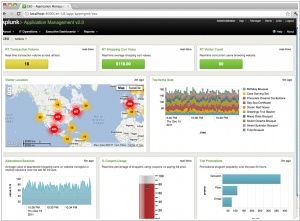
Cloud monitoring provider Splunk is bolstering its machine learning capabilities to facilitate the identification of critical data. The Splunk Machine Learning Toolkit introduces several new features specifically designed for those who prefer a do-it-yourself approach. Firstly, a new data cleaning tool has been implemented to prepare the data for modeling. Additionally, machine learning APIs have been introduced, enabling the importation of both open-source and proprietary algorithms for application within Splunk. Lastly, a machine learning management component allows for seamless integration of user permissions from Splunk into customized machine learning applications. For users seeking a more automated experience, Splunk offers new features such as Splunk ITSI 3.0. Leveraging machine learning, this tool assists in issue identification and prioritization based on the criticality of each operation to the business. These advancements empower users to derive meaningful insights from their data while tailoring the level of involvement according to their preferences.
2016. Splunk unveiled 300 machine learning algorithms for Operational Intelligence
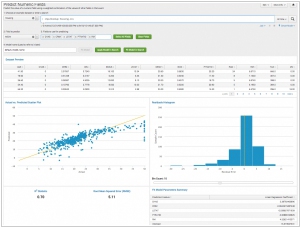
Splunk, a leading provider of Operational Intelligence platforms, has made significant advancements in incorporating machine learning capabilities into its platform, thereby expanding its range of services and capabilities. The company has integrated machine learning at the core of its platform through the introduction of a machine learning toolkit, which can be installed as a complimentary app on top of the Splunk Enterprise platform. This toolkit offers users access to a comprehensive set of 300 machine learning algorithms, with 27 of them conveniently pre-packaged and ready to use. These algorithms cover various categories such as clustering, recommendations, regression, classification, and text analytics. Furthermore, Splunk has enhanced its machine learning functionality within the IT Service Intelligence (ITSI) platform, which was initially introduced a year ago.
2015. Splunk acquired machine learning startup Caspida
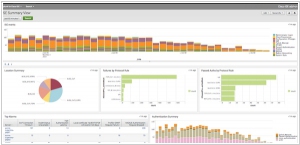
Cloud monitoring provider Splunk has recently acquired Caspida, a startup specializing in utilizing machine learning methods to detect cybersecurity threats both internally and externally. Splunk offers assistance to organizations in managing the influx of machine-generated data from their IT systems, employing data science techniques and automation to derive insights from it. Within its product portfolio, Splunk provides a security solution called Splunk App For Enterprise Security. By acquiring Caspida, Splunk enhances its security capabilities by incorporating the advanced machine learning techniques developed by Caspida. This empowers Splunk to analyze user behavior at a granular level, even for seemingly legitimate users with proper credentials. Splunk's overall approach revolves around data science-driven solutions, delivering automated threat detection and leveraging machine learning to continuously improve its capabilities over time.
2015. Server log monitoring tool Scalyr raises $2.1M
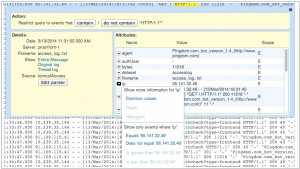
Scalyr, a log-monitoring service that provides developers with comprehensive insights into application performance, has successfully raised $2.1 million in a seed round. The core concept behind Scalyr is to consolidate data from server logs, along with various metrics, error reports, and performance data, into a single tool that offers actionable insights. While similar log management services like Splunk and Loggly exist, these tools often present anecdotal information without a cohesive overview. Scalyr differentiates itself by focusing on aggregating and analyzing errors rather than directly competing with performance-focused platforms like New Relic. Given the rapid growth of log files and the computational requirements for analysis, the Scalyr team has developed a robust data management engine to efficiently handle and process this substantial amount of data.
2013. Splunk launches Splunk Cloud

Splunk, the leading software platform for real-time operational intelligence, has announced the general availability of Splunk Cloud - a new service that brings Splunk Enterprise to the cloud. With Splunk Cloud, organizations can now gain visibility and operational insights into their machine-generated big data in the cloud, while also correlating this data across their cloud and on-premises environments. The introduction of Splunk Cloud for large-scale production environments expands the offerings of Splunk Storm, the cloud-based service introduced last year, which now provides free developer access to 20GB of total storage per month. Powered by Amazon Web Services, Splunk Cloud includes access to all features of the Splunk Enterprise platform, including apps, APIs, alerting, and role-based access controls.

